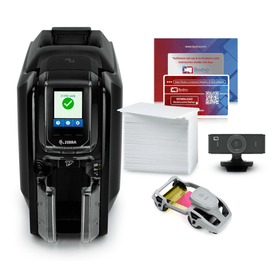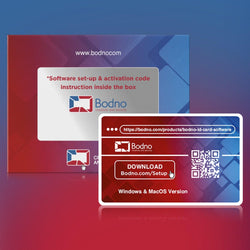Financial institutions, such as banks, lenders, insurers, etc., receive the majority of the attention when it comes to identity verification. Given that IDV is required by anti-money laundering (AML) and know your customer (KYC) laws and regulations, this makes logical. However, they are by no means the only businesses that stand to gain from adopting identity verification procedures. The education sector is a prime example of how businesses in a wide range of industries can use identity verification to increase customer confidence in their platforms and give them a better, more secure experience.
In the current digital era, student verification has become a crucial component of education. Universities and educational institutions are taking additional efforts to confirm the authenticity of their students as online learning becomes more common. In the sections that follow, we define student identity verification, look at the several points in the educational process when it is frequently used, and talk about the various forms it can take.
Student Identity Verification: What Is It?
The process of confirming a learner's identity at several points during their education is referred to as student identity verification. The aim is to guarantee that the individual who enrolls in a class, course, certificate, or degree and who will obtain the credential or credit connected with it is the same individual who really finishes the subject.
How Does The Student Identity Verification Operate?
There are differences in the student identification verification procedures depending on whether a student is enrolled in classes at a physical school, like a college or university, or online or through a remote platform. Both are discussed below.
Student Identity Verification In Person
In-person college and university students have traditionally had to periodically confirm their identities. Normally, this would be accomplished using analog techniques, like the usage of ID cards.
For instance, in order to access on-campus facilities like classroom buildings, libraries, laboratories, etc., as well as when finishing significant exams, students frequently need to scan or display these cards to faculty members.
Student Identity Verification Online
Recently, more and more students are choosing to finish their education online by enrolling in distance learning or hybrid programs provided by colleges and online learning platforms.
As a result, learners are now more comfortable and have more choices because they are no longer constrained by their location or their closeness to physical institutions. Additionally, this change has raised fresh worries about the possibility of academic fraud.
Automated identity verification has emerged as a crucial weapon in the fight against fraud. In light of this, the majority of online learning environments double-check student identities throughout the account creation process and again at significant points in the student's education, including when they are logging in to take an exam.
The Importance Of Verifying Student Identity
Verifying a student's identity is crucial since it promotes trust in the online education sector. It would be next to impossible to certify that a certain student actually finished the course material and received a credential without verification. While casual, free courses may not be affected by this, online learners pursuing degrees, certifications, or continuing education should pay close attention to this.
Institutions and platforms want to ensure that learners utilizing their platforms are not defrauding them because this could damage their reputation. Employers also want to be sure that applicants' academic credentials are genuine because if they are not, they risk hiring someone who is unqualified for the position.
The Benefits Of Student Identity Verification
Student identity verification's main advantage is that it aids online education platforms in establishing brand trust. Increased adoption, particularly from businesses and educational partners, increased signups, and ultimately increased profitability can all result from this enhanced trust.
What Distinguishes Student Idv From Other Identity Verification Methods?
Many of the same verification methods used in other businesses are used for student identification verification. The use case makes the biggest difference.
It's also important to remember that, unlike some businesses, like the financial sector, where completing IDV is required by law, the education sector does not yet have such a requirement. Nevertheless, it can be quite helpful in lowering fraud and boosting brand trust.
How To Use ID Cards To Verify Student Identity?
Student photo identification cards are one of the best ways to confirm a student's identity. Are you looking for ways to increase school security and safety?
The use of ID badges is regarded as an essential resource on school campuses to manage access and monitor attendance. ID badges have emerged as one of the best ways to authenticate students and staff. So, how do you start printing your school’s ID cards?
Many schools choose to print the cards themselves in order to save money and speed up turnaround. You can easily provide cards to students right away by printing your own ID cards. Instant access to your own printer is especially helpful when it comes to quickly reissuing lost or stolen badges.
Cards are made in educational institutions for a variety of uses, from resource usage to photo verification. Some of the most common types of cards used in educational institutions are:
- IDs for students
- Badges for teachers and other staff
- Library cards for media
- Restaurant cards
- Badges for guests
The Evolis PrimacyID card printer is an excellent choice for the educational setting. The Evolis PrimacyID offers dependability, usability, and performance superiority and comes with a free touchscreen LCD display upgrade. In batch printing mode, the PrimacyID can produce up to 225 full-color, single-sided cards (or 140 dual-sided cards) in an hour.
As an alternative, you can swiftly print single cards or small batches using the manual feed option. With some setups, data can be encoded on cards or a protective film can be applied to the plastic card in a single pass with lamination capability. Your full-color or monochrome designs will last longer if they are laminated, and it also shields the cards from daily physical abuse.
Lamination also helps prevent ID card fraud and manipulation because the overlaminate is challenging to work with. Due to its compatibility with both a Mac and PC environment, the PrimacyID scores extra popularity points with schools.
An industry-leading three-year manufacturer's guarantee on the printer and printhead covers the PrimacyID printer. The starter cleaning kit, USB cable, printer drivers, and user manual are all included with this printer. These items are necessary for maintaining the printer's peak performance.
An important thing to keep in mind while looking for ID card printers is that you won't get a color ribbon, the software required to create your cards, or the plastic CR8030 cards required to make the finished product if you buy a stand-alone printer. You should also think about how you'll take the photos that will be used to make your ID cards. You could also invest in a plug-and-play picture ID camera that connects to your computer if you don't already have the image files.
























